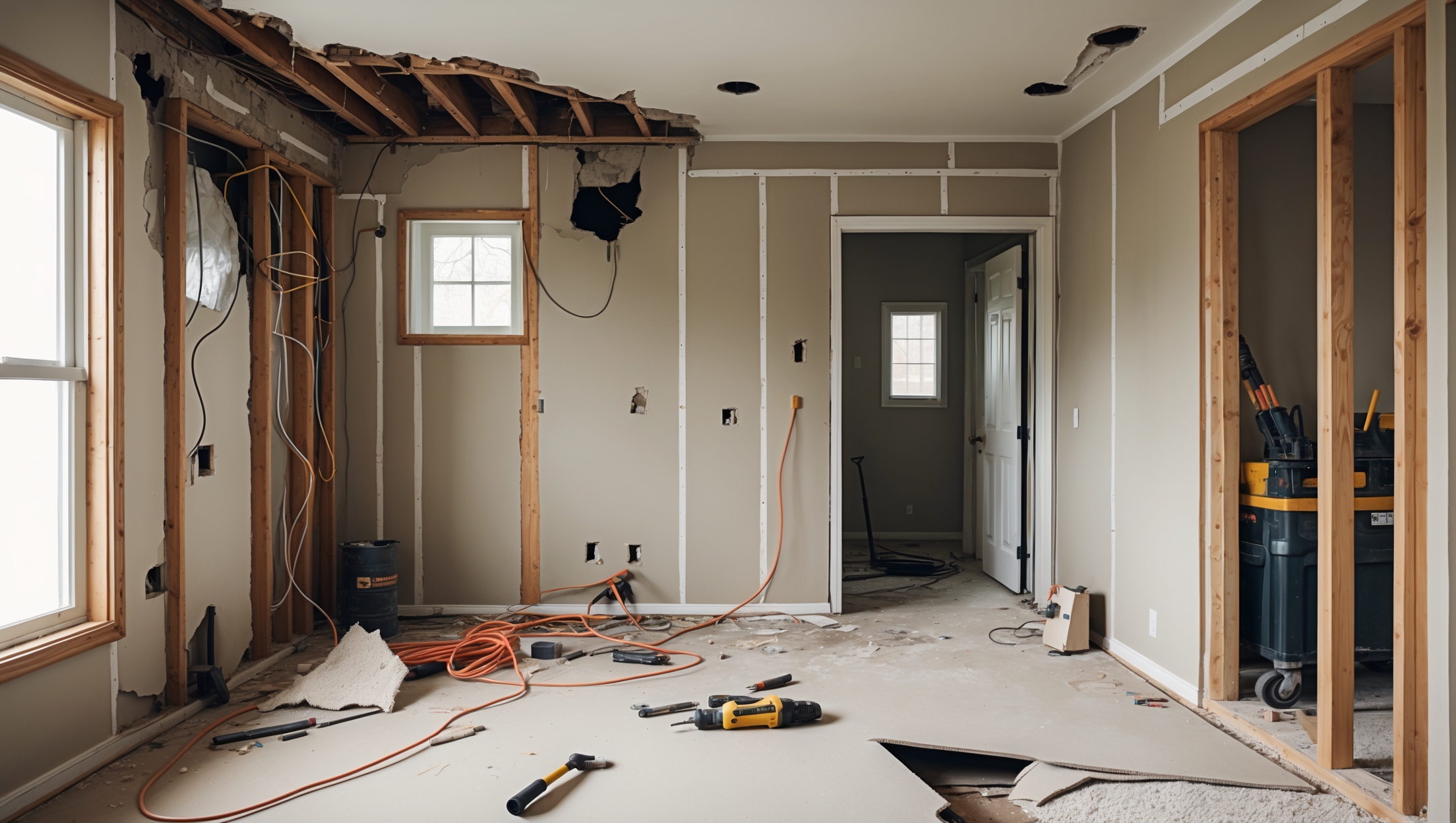Introduction: Why Room-Specific Permit Knowledge Matters
Home improvement offers the chance to tailor your space to your needs and tastes, but behind every successful renovation is a foundation of legal compliance. Across the country, thousands of homeowners face unexpected fines, costly delays, or even forced removals of unauthorized work simply because they misunderstood or overlooked permit requirements. The complexity increases as you move from one room to another—what’s required for a bathroom remodel isn’t the same as an attic conversion or a kitchen upgrade. Understanding these nuanced permit rules is critical for smooth, legal, and stress-free home improvement. This guide demystifies the permit landscape, providing a detailed, room-by-room compliance roadmap so you can confidently plan your next project without fear of hidden pitfalls.
Understanding the Basics: What Is a Permit and Why Is It Needed?
Before diving into specifics, it’s essential to grasp what permits are and why municipalities require them. Building permits are official approvals from your local government that allow you to proceed with construction, renovation, or demolition. Their purpose is to ensure projects comply with safety codes, zoning laws, and other regulations designed to protect occupants and the community. Projects completed without required permits can result in steep fines, legal liability, difficulty selling your home, and even forced removal of improvements.
Kitchen Renovations: Compliance Essentials
Common Projects That Require Permits
- Wall removal or modification: Any structural changes, including knocking down or moving walls, generally require a permit and may trigger structural engineering reviews.
- Electrical upgrades: Adding outlets, upgrading circuits, or installing new lighting fixtures beyond simple replacements typically require electrical permits.
- Plumbing changes: Relocating sinks or dishwashers, or adding new plumbing lines, almost always needs a plumbing permit.
- HVAC adjustments: Adding or relocating vents or ducts can require mechanical permits.
- Window and door changes: Widening or adding new windows/doors usually requires a permit due to structural implications and energy code compliance.
Projects That May Not Need Permits
- Cabinet replacement (if no plumbing or electrical is moved)
- Countertop upgrades (unless involving sink relocation)
- Painting and minor cosmetic work
Special Considerations
Historic homes or homes in special zoning districts may have additional requirements. Always check if your property falls under such jurisdiction before proceeding.
Bathroom Remodels: Permitting Do’s and Don’ts
Permit-Required Work
- Structural changes: Enlarging the bathroom or moving load-bearing walls.
- Plumbing modifications: Moving toilets, showers, or sinks.
- Electrical work: New circuits for lighting, fans, or heated floors.
- HVAC: Adding or relocating exhaust fans and ductwork.
No-Permit Work
- Replacing fixtures (such as toilets or faucets) in their existing locations
- Tile replacement and painting
Inspection Points
Most bathroom permits require inspections at rough-in (before walls are closed up) and at final completion to check for code compliance, especially regarding waterproofing and electrical safety.
Basement Finishing and Conversions: Navigating Complex Compliance
Permit Triggers
- Adding living space: Converting basements into bedrooms, living rooms, or apartments.
- New egress windows: Required for bedrooms (to allow emergency escape).
- Insulation and vapor barriers: Code requirements often apply and need inspection.
- Electrical and plumbing: New wiring, outlets, lighting, or bathrooms need permits.
Complications
Basement work often uncovers existing code violations or moisture issues. Addressing these is usually mandatory as part of the permitted work.
Attic Conversions: From Storage to Living Space
Permit-Required Actions
- Structural alterations: Reinforcing floors, adding dormers, or modifying roof framing.
- Staircase installation: New stairs must meet strict rise/run and handrail requirements.
- Insulation and ventilation: Must comply with building and energy codes.
- Electrical and HVAC: All new systems require permits and inspections.
Fire Safety
Local codes often require smoke/CO detectors and proper egress windows for legal bedrooms. Expect multiple inspections.
Room Additions and Conversions: Expanding Your Home
Permit Essentials
- Foundation work: Any new foundation or slab must be permitted and inspected for safety and stability.
- Framing and roofing: New walls, roofs, and structural supports are always permitted work.
- Electrical, plumbing, and HVAC: All new systems need appropriate permits.
- Zoning compliance: Additions must respect property lines, set-backs, and other zoning rules.
Special Approvals
Some areas require neighborhood association approval or special variances for additions. Always check before submitting permit applications.
Garage Conversions: From Parking to Living
Common Compliance Hurdles
- Change of use: Converting a garage to living space usually requires a new certificate of occupancy.
- Insulation and fire separation: Walls between the new living space and any remaining garage area must meet fire code standards.
- Electrical upgrades: New outlets, lighting, or HVAC all require permits.
- Egress and ventilation: Windows and doors may need to be added or enlarged for safety and comfort.
Outdoor Projects: Decks, Patios, and Sheds
Permit-Required Outdoor Work
- Decks: Most decks over 30 inches above grade require permits. Load calculations, footings, railings, and stairs are often inspected.
- Sheds and accessory structures: Sheds over a certain size (commonly 120–200 sq. ft.) need permits. Placement must comply with setback rules.
- Patios: Concrete patios may require permits if attached to the home or involving grading/drainage changes.
Fence and Pool Compliance
Fences over a certain height and swimming pools (in-ground or above-ground) almost always need permits due to safety and zoning requirements.
Universal Permit Triggers: What Always Needs Approval?
- Structural work: Any changes to load-bearing elements.
- Major electrical and plumbing: New circuits, service panels, or water/gas line rerouting.
- HVAC installation or major modification.
- Windows and doors in new openings.
- Changing use of space (e.g., from storage to living quarters).
If in doubt, call your local permitting office. Never assume a project is too small to require approval.
The Permit Process: Step-by-Step Guide
1. Research Local Codes
Start by visiting your city or county’s building department website. Download applicable codes and permit application forms. Many jurisdictions have checklists for common project types.
2. Prepare Drawings and Documentation
Most permits require scaled drawings or plans. Simple projects may only need a sketch, but larger renovations require detailed blueprints. Include details on electrical, plumbing, structural changes, and materials.
3. Submit Your Permit Application
Applications are typically submitted online or in-person. Pay attention to required supporting documents (e.g., site plans, HOA approvals, engineering calculations).
4. Await Review and Approval
Processing times vary. Minor permits may be approved same-day; major renovations can take weeks. Be prepared for plan review comments or requests for revisions.
5. Schedule Inspections
Inspections are required at key stages—usually after rough framing, electrical/plumbing rough-in, and at completion. Never cover work until it’s inspected and approved.
6. Get Final Sign-Off
Once all work passes inspection, you’ll receive a final approval or certificate of completion—essential for insurance and resale.
Common Permit Myths Debunked
- “I’m doing the work myself, so I don’t need a permit.”
False. Permits are about the work done, not who does it. - “My contractor will handle all permits.”
Not always true. Always verify that your contractor has obtained necessary permits before work begins. - “Minor changes don’t need approval.”
Many seemingly small projects have hidden compliance triggers—always check before starting. - “I can get a permit after the fact.”
Some jurisdictions allow retroactive permits, but it’s expensive, complicated, and may require tearing out finished work for inspection.
Consequences of Skipping Permits
- Fines and penalties: Unpermitted work often results in hefty fines or stop-work orders.
- Resale issues: Home inspectors and appraisers routinely flag unpermitted work, complicating sales or refinancing.
- Insurance denial: Claims can be denied if damage is linked to unpermitted work.
- Forced removal: Municipalities can require you to undo work at your own expense.
Pro Tips for Smooth Permit Approval
- Plan ahead: Build permit time into your project schedule.
- Communicate with inspectors: Ask questions, clarify code requirements, and schedule inspections early.
- Keep records: Save copies of all permit documents, plans, and inspection approvals.
- Use licensed professionals: Some jurisdictions only accept permits from licensed contractors for certain trades.
- Don’t cut corners: Passing inspections the first time saves time and money.
Conclusion: Compliance Is the Cornerstone of Successful Home Improvement
Home improvement is about making your space more functional, beautiful, and valuable, but none of these benefits are worth jeopardizing your investment with overlooked compliance. Permit requirements are nuanced, varying not just between cities but from room to room within your own home. As this guide has shown, even seemingly simple upgrades can trigger permit needs based on structural, electrical, plumbing, or zoning considerations. By understanding which projects require permits in each area of your home, preparing thorough plans, and communicating openly with your local building department, you avoid costly mistakes that can derail your renovation dreams. Remember, permits protect your home’s safety, your financial investment, and your long-term peace of mind. Take the time to do it right—your future self (and any future buyers) will thank you.




